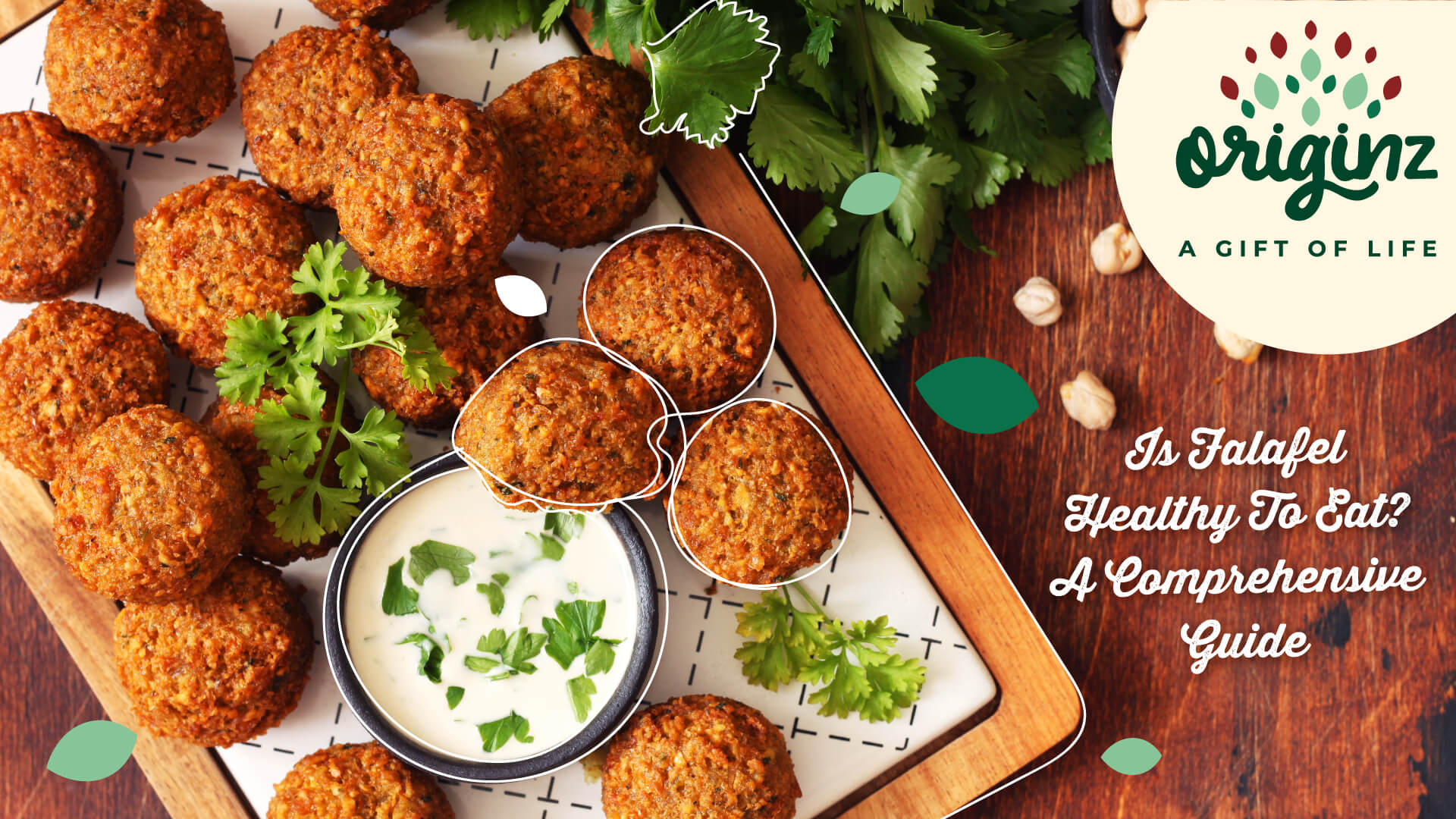
Is Falafel Healthy To Eat? A Comprehensive Guide
Falafel, a cornerstone of Middle Eastern cuisine, has gained international acclaim for its unique taste and potential health benefits. This deep-fried ball, crafted from ground chickpeas or fava beans mixed with herbs and spices, is not just a treat for the palate but also an item of interest for health-conscious individuals. This guide aims to explore the falafel health benefits, analyse falafel calories, provide falafel nutrition facts, offer a recipe to make falafel, and address some frequently asked questions.
Nutritional Insight into Falafel
Central to understanding why falafel is revered is examining falafel ingredients. The primary component, chickpeas, along with herbs, spices, and onions, endows falafel with its notable health benefits. This combination is a powerhouse of protein, dietary fibre, and essential vitamins and minerals, including vitamin C, B vitamins, iron, and magnesium.
Falafel Health Benefits
The health benefits of falafel are manifold. Its significant plant-based protein content makes it a valuable dietary choice for vegetarians and vegans. Protein is essential for bodily repair, immune function, and overall health. The fibre in falafel aids digestion and promotes a healthy gut microbiome. Additionally, fibre helps manage blood sugar levels and can increase feelings of fullness, aiding in weight management.
However, the method of preparation plays a crucial role in determining the healthiness of falafel. Traditionally deep-fried, falafel can be calorie-dense. On average, there are about 60-75 calories in falafel balls. Thus, those monitoring their intake should be aware of the calories in falafel, especially when it is part of a larger meal with additional sauces and sides.
Falafel Nutrition Facts
Despite the potential for higher falafel calories due to frying, the nutritional advantages of falafel are significant. It’s a good source of complex carbohydrates for sustained energy, and it’s low in cholesterol and saturated fats, which is beneficial for heart health.
The falafel ingredients significantly influence its nutritional value. Homemade falafel, where one can control the ingredients and method of cooking, likely offers greater health benefits than store-bought versions, which may be higher in calories due to additional oil content.
Additionally,
organic falafel is often higher in essential nutrients than processed falafel
because of the farming practices used in sourcing organic ingredients.
Recipe to Make Falafel
Harnessing the health benefits of falafel begins with preparing it at home. Here’s a simple yet delicious recipe:
• Ingredients: 1 cup dried chickpeas (soaked overnight), ½ a large onion (chopped), 2-3 garlic cloves, 1/4 cup fresh parsley, 1 tsp ground cumin, 1 tsp ground coriander, 1/2 tsp salt, 1/4 tsp black pepper, 1-2 tbsp flour, oil for frying.
• Instructions: Combine all ingredients (except oil) in a food processor until a coarse mixture is achieved. Form into balls or patties. Fry in hot oil until golden or, for a healthier alternative, bake at 375°F for 25-30 minutes, turning once.
FAQs
Can falafel be part of a weight management diet?
Yes, falafel, especially when baked and consumed in moderation, can fit into a weight management diet. Its fibre content promotes satiety, which can help control overall calorie intake.
Is falafel gluten-free?
Falafel itself, made from chickpeas, herbs, and spices, is naturally gluten-free. However, some recipes or commercial falafel may include flour as a binder, so it’s essential to verify ingredients if you’re avoiding gluten.
How can I include falafel in my diet?
Falafel is versatile—enjoy it in a pita with fresh veggies and tahini, atop a salad for a protein boost, or as a snack with hummus. Explore the selection of Middle Eastern recipes available on the Originz website for more culinary inspiration.
In conclusion, falafel can be a nutritious addition to your diet when prepared with health in mind. Its rich nutritional content, combined with the fibre and protein it provides, supports a healthy eating plan. Nonetheless, mindful preparation and portion control are essential. Opting for baking instead of frying and choosing fresh, quality ingredients can enhance the health benefits of falafel, allowing you to enjoy this Middle Eastern delicacy as part of a balanced diet.
Further Read,
The
Ultimate Guide to Crispy Chicken: Tips and Tricks to Get the Perfect Crunch
Pine
Nuts: Uses and Health Benefits
Fish vs. Chicken: Unveiling the Healthier Choice for Weight Loss & Nutritional Value
Latest Blogs

Maintaining Healthy Habits After Ramadan
Have Ramadan healthy meals after Ramadan and maintain healthy food habits and implement them in your daily lives. Read more about healthy food habits.

Authentic Middle Eastern Iftar Meals to Prepare This Ramadan
Prepare some authentic middle eastern iftar meals this Ramadan. Look for fresh Ramadan food ideas and make your day memorable with these dishes. Check them out.

Ramadan Dishes to Cure Fasting Fatigue
Don’t worry about fasting fatigue anymore as we have listed some best Ramadan dishes and easy iftar meals to support your fasting journey. Check them out.

Eid-al-Fitr Feast: Delicious Recipes to Celebrate the End of Ramadan
Celebrate the end of Ramadan with delicious recipes on the eve of Eid ul Fitr. Read more about the traditional Ramadan recipes and make them easily.